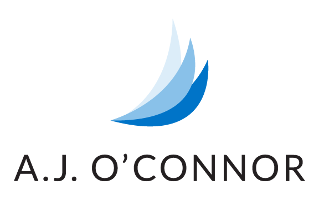
How Proactive Actions Resolve the Cultural Debt Challenge
Cultural debt is when the actions of an organization, company, employees or stakeholders neglect the workplace culture. If left unaddressed, cultural debt can have a number of negative consequences.
Resolving cultural debt takes some finesse so that it can be resolved with decorum. However, before we dig into the best ways to fix cultural debt, let’s look at how it accumulates and why companies should be aware of – and address – company culture issues early.
How Companies Accumulate Cultural Debt
Companies accumulate cultural debt when there is a lack of cultural maintenance. It’s easier to proactively address a potential problem within your organization than to deal with the mess and potential bad press that can come when upset individuals feel wronged and ignored.
Cultural maintenance has an expansive reach and covers a wide range of areas. Organizations need to be aware of anything lacking structurally, organizationally, technology, socially or environmentally. Shortfalls in these areas can compromise the cultural standard the company has set.
Cultural debt is often accumulated when companies fail to invest in their culture with development programs, have poor leadership, implement ineffective policies, experience rapid growth, have poor communication, lack feedback mechanisms or resist change.
Why Cultural Debt Should be Addressed
The numerous ways a company can accumulate cultural debt can be overwhelming, which is why many of these issues get prioritized below factors that directly impact the company revenue. However, when these issues aren’t addressed early on, they have the potential to cause problems that need immediate attention and cost more than the maintenance.
Negative Morale
When a company has negative morale, it makes it difficult for employees to want to stay and perform their duties at a high level. It also impacts interactions with customers and partners.
PR issues
Companies want their brand noticed, but not for bad press. Today’s small issues can become tomorrow’s headline news if ignored.
Declining Consumer Confidence
Customers notice when a company can’t keep up with demand, address complaints or deliver a quality product. In addition, customers are becoming more aware and conscientious of the actions of the companies with whom they do business.
Decreased Employee Retention
When management or skilled employees leave, it is critical for the organization to explore the reasons. Employees are seeking jobs where they feel cared for, and if that need is not met, they will find an organization that can fill it.
Legal Liabilities
Legal issues are the most complex and costly to navigate. Addressing gaps and risks before they become legal liabilities will save your company time, money, resources and damage to your brand’s reputation.
Best Practices for Resolving Cultural Debt
Resolving cultural debt depends on your organization’s needs, but typically, three categories have the biggest impact on resolving and preventing cultural debt. These include managing organization and technical issues, building a positive workplace culture and providing regular company development. Let’s have a closer look at each:
- Manage Organization Processes & Technical Issues
Procedures and technology can make or break an organization. When an organization is prepared with effective organizational processes, most issues will have a clear roadmap for how to address them. Additionally, when your employees have the right technology, they can do their jobs without frustration. While taking the time to establish and manage processes and tech requires an investment, it is far better than the alternative of having to address a crisis. A broken or inadequate system causes issues that can build up and create a negative workplace culture where employees feel frustrated.
- Build A Positive Workplace Culture: Cultural Norms, Fit and Mismatch
Building a positive workplace culture takes commitment and effort. Some common reasons workplace culture becomes negative include not addressing cultural fit, cultural mismatch and cultural norms. Making sure that all of these are nurtured and balanced will help your workplace culture become and stay positive.
- Cultural Norms. Cultural Norms are behaviors within an organization guided by rules and expectations. Positive or negative interactions between coworkers create cultural norms. Companies need to invest in training employees about these expectations to establish a positive work culture. Leaders must remain aware of how they behave because they set the standard for the cultural norms of their team.
- Cultural Fit. Cultural fit is how the employee’s values, attitudes and behaviors align with the culture within your organization. When you keep a pulse on your employees’ attitudes towards their work, environment, co-workers and bosses, you can better determine if they fit into the work culture you want to create. When there are issues, they can be addressed before they become problems. This can help to ensure that employees fit into your culture.
- Cultural Mismatch. Cultural mismatch is where most of the contention in a workplace occurs. It occurs when the organizational cultural norms don’t align with an employee’s values, attitudes or behaviors, which makes it hard for them to find a cultural fit within the organization. Incorporating cultural fit into your talent acquisition strategy can help to militate these issues.
- The Value of Focusing on Company Development
Fortunately, with regular maintenance that targets the cultural challenges you see in your organization, you can assess and address the cultural norms of your organization and create a positive workplace culture. Some of the best company tactics for resolving and managing cultural debt include executive coaching, talent development and providing career transition support.
- Executive Coaching. Executive coaching is a development tool that all organizations should invest in to help unlock the full potential of their existing and emerging leaders. Learn about the different coaching solutions that AJO can offer to help empower your teams.
- Talent Development. Another opportunity is investing in talent development. Taking an active role in helping your employees to develop the knowledge, skills and behaviors needed for growth and success with help to build engagement and drive better results for the organization.
- Career Transition. Sometimes, a restructuring or a reduction in force can impact employees. Offering career transition support helps to preserve your brand and deliver comprehensive outplacement services that treat individuals with compassion and respect.
If your team is ready to proactively address the cultural debt you might be carrying, let AJO be your guide to get your company back on track. From leadership coaching and talent development programs to strategic HR consulting practices, we can help you transform your culture for truly sustainable results. Connect with us today.

